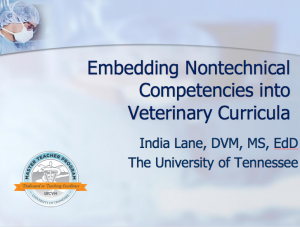Is there a difference between teaching non-traditional, adult students and “traditional” students in their late teens and early twenties? Research in adult education programs indicates there is. In the mid to late 20th Century, Malcolm Knowles pioneered the field of andragogy — “the art and science of helping adults learn” — and contributed a great deal to the development of adult and vocational training programs.
What is Andragogy?
Andragogy (from the Greek andros or adult man and agogus meaning leader of) is a play on the word pedagogy (or the leading of children). Methods differ simply because of the wealth of experience an adult learner possesses.
What makes teaching adults different?
Four characteristics differentiate how adults approach learning.
- Their self-concept moves from one of being dependent toward being self-directed.
- They accumulate experience that becomes a resource for learning.
- Their readiness to learn becomes oriented on the development of their social roles.
- They prefer immediate application to postponed application and become more interested in performance-centered learning.
As a result, we can make three assumptions about adult learners:
- The learning of an adult is largely determined by his or her life context.
- The learner takes an active, leading role in the adult learning process.
- The learner and the teacher cooperate in all stages of learning.
What does this mean in practice?
At the College of Veterinary Medicine, we have a mix of adults and young adults, and some of these characteristics and assumptions will apply more than others depending on which group you are teaching.
During the first year of the DVM program, we provide foundational knowledge delivered didactically. In the second and third years, we let the students make choices about what they want to learn using electives. Hands-on lab work in the third year and in the fourth year move to team-centric practice. In fact, instructors may see their students becoming more self-directed as they progress in the program.
Here are five tips for improving the learning experience of our students based on what we know about andragogy.
Think team-centric
A team-centered learning environment allows for the free-exchange of ideas and information and fosters mutual engagement, interest and respect.
Build-in opportunities for students to self-evaluate
1) Work from a model of competence, indicating how and and what students should achieve.
2) Provide diagnostic experiences that allow students to test what they already know.
3) Provide self- assessment opportunities to help the learners measure gaps between their knowledge and mastery.
Plan
Define learning outcomes, design and conduct learning experiences, and evaluate success in achieving outcomes.
Encourage student “buy-in”
Conduct learning experiences that promote student buy-in. This encourages them to treat learning as a mutual responsibility. The faculty member acts as a resource or facilitator more than an instructor. This can be accomplished through presentations and team projects conducted in small groups.
Evaluate
Once an activity, assessment, module or course s complete, allow for “re-diagnosis of learning needs” that highlights growth and not failure. In addition to self-evaluation, students should be encouraged to evaluate their experience and make critical suggestions for improvement.
Here are some helpful resources to learn more about andragogy:
Knowles, M. S. (1980). The Modern Practice of Adult Education – From Pedagogy to Andragogy.
Knowles, M. S. (2005). The Adult Learner.
Zmeyov, S. I. (1998). Andragogy: Origins, Developments and Trends. International Review of Education, 44(1), 103-108.


